The run-down on Wooroona Grazing Co.
Host: Wooroona Grazing Co.
Written by Claire Dunne – Owner, Wooroona Grazing Co.
Naturally, cattle operations are run differently across the country depending on size of land, stocking rates, environmental factors, and the nature of the manager and owner. Here is the quickest overview for how we generally run things across the breeding and fattening operation at Wooroona Grazing Co. I’ll be focussing on the homestead property of Wooroona, which is the breeding property that supplies cattle to our other properties.
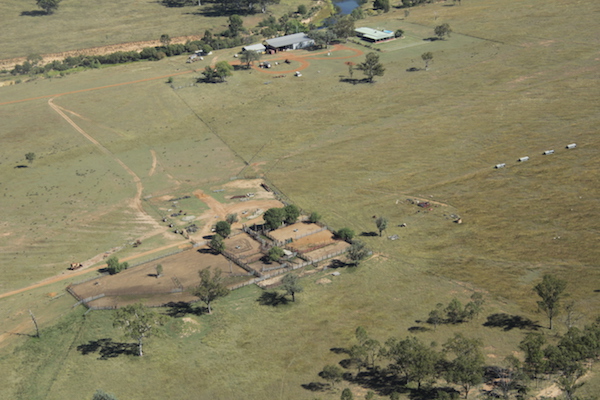 An aerial view of Wooroona, the homestead in the top right hand side and the yards in the bottom left.
An aerial view of Wooroona, the homestead in the top right hand side and the yards in the bottom left.
Mustering
The operation we run is set up to need minimal labour. Although the generation before me grew up mustering with several horses, a pack of dogs, motorbikes and the odd helicopter, one person on a motorbike is generally all you need to muster a couple of hundred cattle in a 2000 hectare paddock. A combination of laneways and trapping on to waters is the system we use across all of the cattle properties for efficiency and ease of mustering.
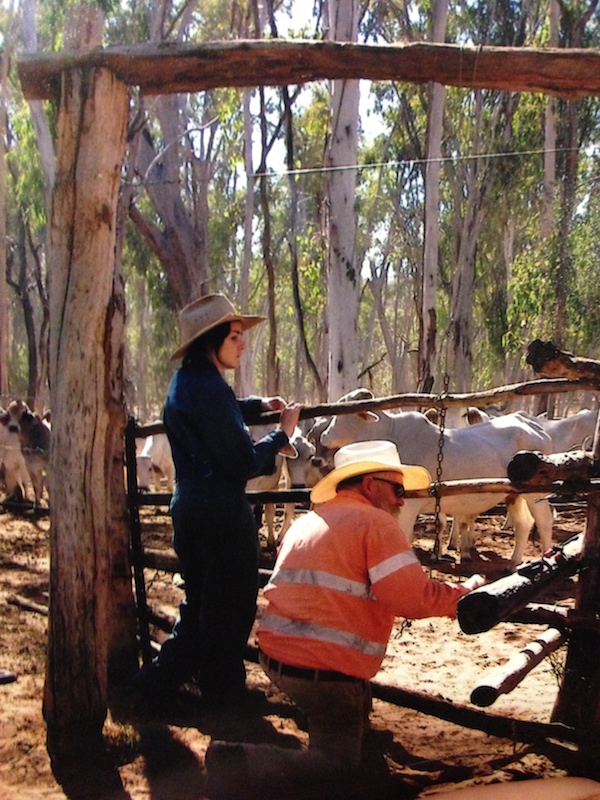 Fixing a trap into a dam. This is the “outgoing” trap, this will be shut off if you want to trap the cattle.
Fixing a trap into a dam. This is the “outgoing” trap, this will be shut off if you want to trap the cattle.
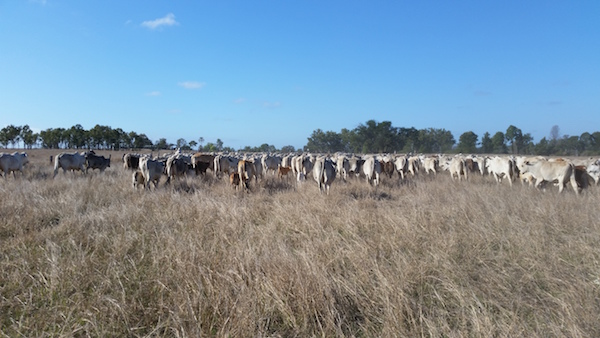 Cattle in a laneway in winter. Note the dead grass – in winter Wooroona becomes very protein deficient. As soon as there are one or two frosts, the grass dies and doesn’t start to grow again until spring when it heats up. There is no protein in the grass whatsoever.
Cattle in a laneway in winter. Note the dead grass – in winter Wooroona becomes very protein deficient. As soon as there are one or two frosts, the grass dies and doesn’t start to grow again until spring when it heats up. There is no protein in the grass whatsoever.
The trapping takes advantage of the natural movements of cattle to watering points. We build a fence around some of our watering points – to get to the water the cattle must enter through the “entrance” and leave through the “exit”. We “trap” them in through closing off the “exit” trap at the designated watering point. Cattle are then either processed through yards in the trap paddock or brought home to the main cattle yards through laneways.
We do use a helicopter if it has rained and the cattle are not walking into the designated trap paddock and are preferring to drink from smaller waterholes found in the paddock. And often enough, though you only need a single person to muster, you’ll find several people in a mix of “bush bashers” (old cars also known as “mustering buggys”) and motorbikes out for the day, enjoying the muster.
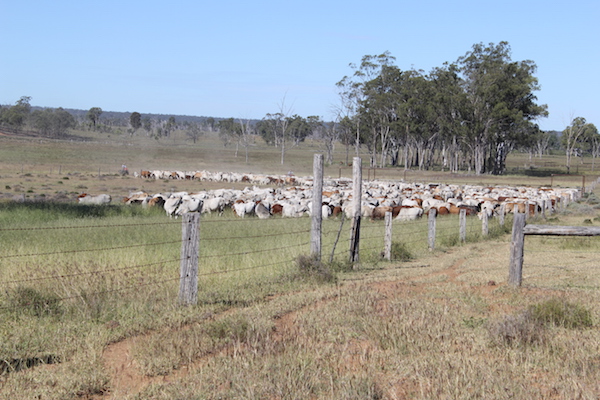 Mustering a holding paddock into a short laneway below the yards.
Mustering a holding paddock into a short laneway below the yards.
Cattle breeding
There are a few over 2000 Brahman breeders on Wooroona along with a number of Brahman, Hereford, and Charolais bulls. The Brahman (Bos indicus) cattle suit the country better therefore making up the mass of our operation. We are located in an area with cattle ticks, and when the dry times roll in the Brahman cattle will perform better under these conditions than a European (Bos taurus) breed will.
Crossbreeding with the Hereford and Charolais bulls is used to increase the productivity of cattle. With the combination of our country type and environmental conditions, the progeny (offspring) displays a hybrid vigour and a growth rate we look for in an animal.
Cattle processing
It’s a never ending cycle of branding, weaning, shifting cattle, and then starting all over again. We generally work around two brandings in a year. Each calf will be processed accordingly to their gender, breed, castrated if need be, as well as dehorned and branded with one of Wooroona’s registered brands and a number to determine the calf’s age (the number corresponds to the year they were born). It’s important to be able to process the calves at a younger age, so once they are back on their mother they are cared for and cleaned up.
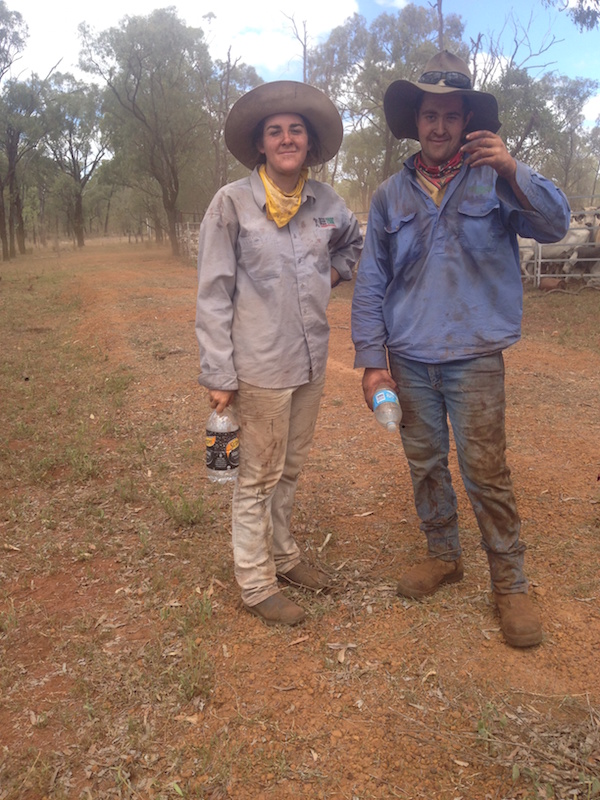 It can be hot and dusty work. Usually we start very early (think 4 am) to beat the heat and knock off at midday. We also water the yards with sprinklers to lay the dust.
It can be hot and dusty work. Usually we start very early (think 4 am) to beat the heat and knock off at midday. We also water the yards with sprinklers to lay the dust.
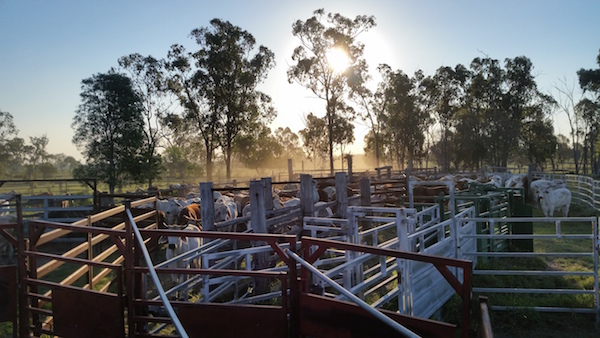 Bullocks on one of the fattening blocks.
Bullocks on one of the fattening blocks.
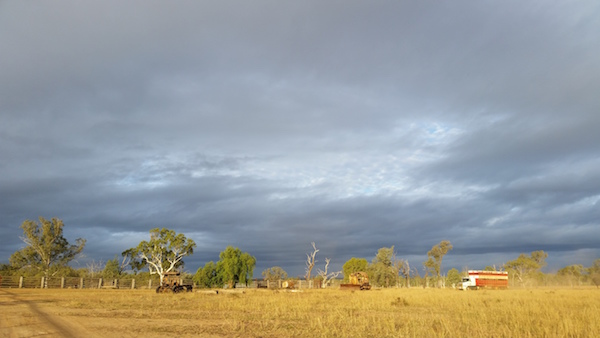 Carting cattle.
Carting cattle.
Weaners and cull cows are shifted off to fattening blocks where they free-range graze until they are ready to sell.
Another ongoing process is shifting our herd to becoming naturally polled cattle. Essentially “Polled” cattle will not grow horns and take out the need for dehorning. The elimination of horns is one less job to worry about and better for our animal’s welfare. We have introduced gene testing to our paddock bulls for the PP gene which confirms that they will produce offspring that are poll cattle. For the best percentage of poll offspring the breeders should also have a PP gene which we are working towards as well (editors note: see a great blog about this topic here).
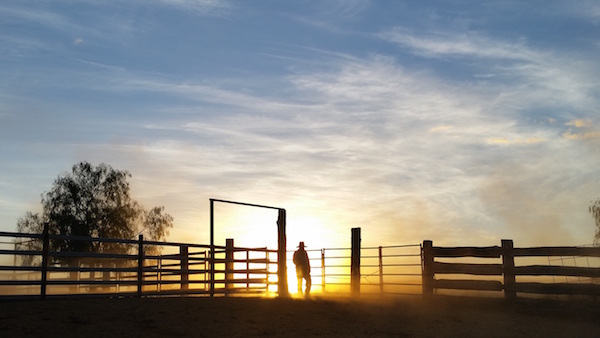 Sun setting over the yards after going through a mob of cattle.
Sun setting over the yards after going through a mob of cattle.
